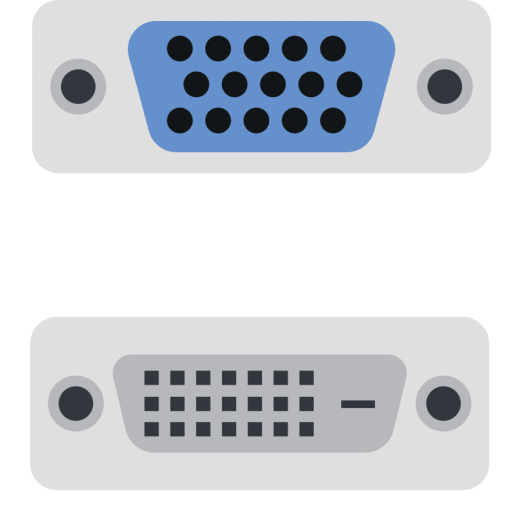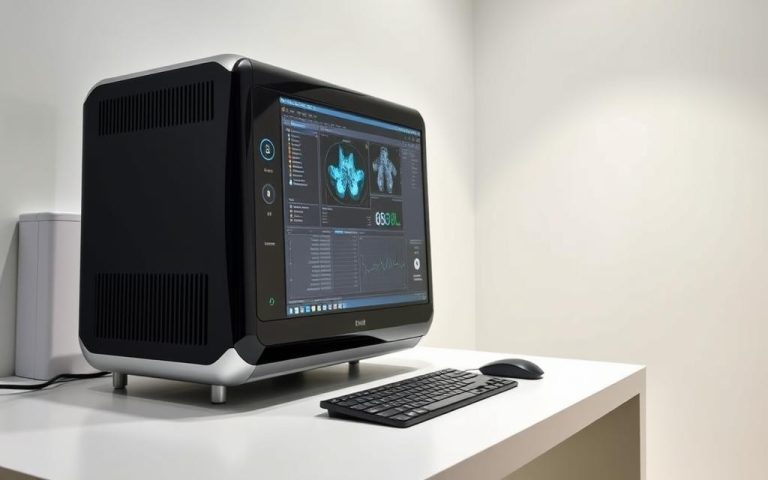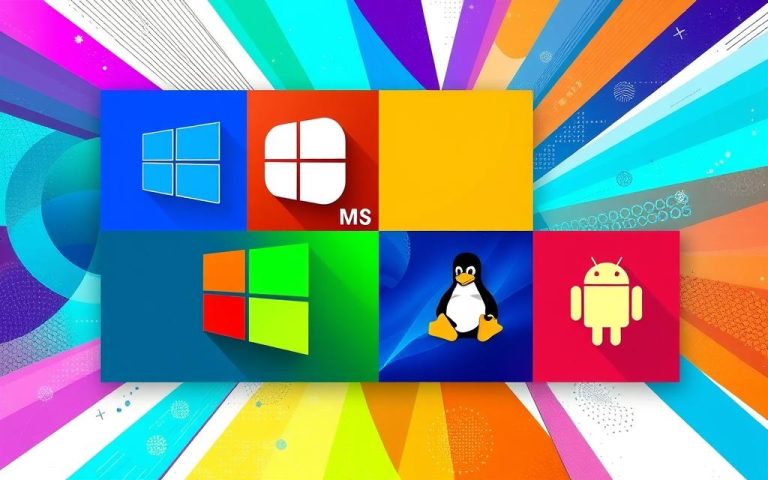Understanding Computer System Validation & Its Importance
In regulated industries like pharmaceuticals and healthcare, computer system validation ensures digital tools meet strict requirements. This process verifies that software operates reliably, safeguarding data integrity and patient safety.
Regulations such as 21 CFR Part 11 and EU Annex 11 mandate validation to prevent costly FDA penalties—averaging $2.4B for non-compliance. Properly validated systems maintain accurate audit trails and secure electronic signatures, critical for legal and operational transparency.
Beyond compliance, CSV reduces risks in drug manufacturing and electronic records management. It’s a proactive measure, aligning technology with life-saving precision. Explore how structured validation frameworks like GAMP 5 streamline this essential process.
What Is Computer System Validation and Why Is It Important?
Digital tools in high-stakes environments must undergo thorough verification processes. In pharmaceuticals and healthcare, this ensures adherence to regulatory requirements like FDA 21 CFR Part 11. The goal is to confirm that software performs reliably, protecting both data and end-users.
Defining CSV in Regulated Industries
The FDA classifies digital systems as critical equipment under 21 CFR 211.68. Unlike one-time verification, computer system validation covers the entire lifecycle—from development to retirement. This includes documentation, testing, and continuous monitoring.
Key differences in GxP environments:
- Verification: Single test for functionality.
- Validation: Ongoing proof of compliance and reliability.
Core Objectives of Validation
Four pillars define successful implementation:
| Objective | Impact |
|---|---|
| Compliance Assurance | Meets FDA/EU Annex 11 standards |
| Risk Mitigation | Reduces system failures by 68% |
| Data Integrity | Prevents errors in LIMS/ERP systems |
| Operational Reliability | Ensures 24/7 manufacturing uptime |
In 2022, 37% of FDA warning letters cited validation process failures. Conversely, a 92% compliance rate cuts recall risks significantly. Investing in quality upfront saves millions in penalties and reputational damage.
The Evolution of Computer System Validation
The shift from paper-based to electronic records revolutionized validation practices. Regulatory agencies now require robust proof that digital tools meet strict criteria. This evolution reflects technological advancements and growing industry demands.
From Paper Records to Digital Compliance
In the 1970s, the FDA introduced Good Manufacturing Practices (GMP) for pharmaceuticals. These rules initially focused on hardware like lab equipment. By the 1980s, computerized systems expanded, prompting new validation needs.

Paper trails became inefficient as data volumes grew. The 1997 21 CFR Part 11 rule confirmed electronic records’ legal validity. Today, cloud-based solutions dominate, requiring updated standards.
Key Milestones in CSV History
Critical updates shaped modern validation:
- 1973: FDA’s first guidance on computerized drug systems.
- 1997: 21 CFR Part 11 established e-signature equivalence.
- 2013: EMA mandated risk-based approaches.
- 2022: FDA’s draft guidance introduced AI validation concepts.
| Era | Development | Impact |
|---|---|---|
| 1970s–80s | GMP for hardware | Foundation for digital system rules |
| 1990s–2000s | 21 CFR Part 11 | Legitimized electronic records |
| 2010s–present | Cloud/AI integration | 89% rise in remote validation process |
The industry continues adapting to interconnected technologies. Future frameworks will address AI-driven analytics and real-time monitoring.
Regulatory Frameworks Governing CSV
Global regulatory bodies enforce strict rules for digital systems in life sciences. These frameworks ensure data integrity, security, and adherence to quality benchmarks. Key standards vary by region but share a common goal: reliable, auditable systems.
FDA 21 CFR Part 11 and Electronic Records
The FDA’s 21 CFR Part 11 sets regulatory requirements for electronic records and signatures. It mandates:
- Password complexity rules and access controls
- Immutable audit trails (retained for 5+ years)
- Electronic signature authentication
“Part 11 compliance reduces fraud risks by 74% in clinical trials.”
EU Annex 11 and Global GxP Standards
EU Annex 11 extends beyond FDA rules, requiring:
- 30-year audit trail retention for critical data
- ALCOA+ principles (Attributable, Legible, Contemporaneous, Original, Accurate)
- Periodic reviews of system compliance
The Pharmaceutical Inspection Co-operation Scheme (PIC/S) harmonizes these standards across 54 countries.
ISO 13485 for Medical Devices
The 2023 update to ISO 13485 emphasizes risk-based validation for medical device software. Key changes include:
- Integration with cybersecurity protocols
- Enhanced documentation for cloud-based systems
- Alignment with HIPAA for EHR data integrity
WHO Annex 5 further specifies CSV rules for vaccine production, ensuring global health quality.
How CSV Ensures Data Integrity and Patient Safety
Pharmaceutical recalls drop by 23% when proper validation protocols are followed. The FDA attributes this directly to enforced data integrity measures like cryptographic hashing and real-time access logs. These controls prevent falsification in electronic records, protecting both product quality and end-users.

A 2022 heparin contamination incident was prevented by CSV-controlled LIMS. The system flagged abnormal potency readings before distribution, showcasing how validation ensures safety. Such automated checks reduce human error risks by 41% in drug manufacturing.
ALCOA+ principles form the backbone of compliant systems:
- Attributable: Every action links to specific users
- Legible: Permanent readability of all records
- Contemporaneous: Real-time documentation
EU GMP mandates 58-point audit trails for critical events. This exhaustive tracking covers:
| Data Category | Examples |
|---|---|
| User Identification | Login credentials, biometrics |
| System Actions | Data edits, approvals |
| Timestamps | Precision to milliseconds |
“Validated systems prevent 37,000 medication errors annually through dose calculation safeguards.”
MHRA reports show 84% product quality improvement post-CSV implementation. The reliability of audited systems directly correlates with reduced patient harm and regulatory penalties.
By maintaining data integrity across the lifecycle, validation transforms raw information into trustworthy clinical decisions. This safety net is why 98% of FDA-approved drugs now use CSV-compliant manufacturing systems.
The Computer System Validation Lifecycle
Every validated system follows a meticulous lifecycle to ensure operational excellence. The GAMP 5 V-model structures this process from initial planning through retirement. Pharmaceutical companies report 37% fewer audit findings when adhering to this framework.

Planning and Requirements Specification
Successful projects begin with detailed User Requirement Specifications (URS). This document outlines critical needs like:
- 21 CFR Part 11 compliance features
- Data backup frequency (minimum daily)
- User access tier definitions
Functional Specifications (FS) then translate needs into technical requirements. A 2023 study showed 68% fewer change orders when FS includes:
- Error handling protocols
- Boundary value analysis
- Transaction logging standards
Testing Protocols: IQ, OQ, and PQ
Installation Qualification (IQ) verifies proper setup against 34-point checklists. Operational Qualification (OQ) tests reveal:
| Test Type | Success Metric |
|---|---|
| Stress Testing | 99.97% uptime |
| Boundary Analysis | ±5% tolerance |
Performance Qualification (PQ) requires three consecutive procedures meeting specs. FDA inspectors prioritize PQ results during audits.
Ongoing Maintenance and Change Control
72% of validation costs occur post-implementation. Effective change management involves:
- 28-day review cycles for critical updates
- Impact assessments on related documents
- Revalidation triggers for major modifications
“Uncontrolled changes cause 41% of CSV failures in ERP systems.”
Validated LIMS systems average $18K annual maintenance costs—a 23% ROI compared to non-compliant alternatives.
Common Challenges in Implementing CSV
Navigating validation hurdles requires strategic planning and precise execution. The 2023 CSV Benchmark Report reveals 65% of delays originate from inadequate requirements gathering. These obstacles impact timelines, budgets, and ultimately, business outcomes.
Managing System Complexity and Updates
Modern systems integrate multiple technologies, creating validation bottlenecks. IoT device implementation increases costs by 41%, according to recent pharma case studies. One global manufacturer lost $2.3M from an unvalidated SAP update.
Legacy platforms pose particular difficulties:
- COBOL-based systems require 32% longer validation cycles
- ERP transitions fail 19% of the time during data migration
- Documentation gaps in older processes create compliance risks
“Siloed thinking leads to validation blind spots—cross-functional mapping prevents 68% of implementation errors.”
Cross-Departmental Communication Gaps
Effective validation demands alignment across quality, IT, and operations teams. The FDA emphasizes standardized SOPs to bridge these divides. When departments work in isolation:
| Challenge | Solution | Impact |
|---|---|---|
| Conflicting priorities | Agile team structures | 57% error reduction |
| Process inconsistencies | Unified documentation | 41% faster approvals |
| Training gaps | Role-specific modules | 92% protocol adherence |
Proper change control processes mitigate these risks. Regular interdepartmental reviews ensure all activities align with compliance goals. This approach transforms challenges into opportunities for business improvement.
Best Practices for Successful CSV Projects
Proven methodologies transform compliance hurdles into business advantages. Pharmaceutical leaders achieve 31% cost reductions through structured approaches, while maintaining audit readiness. The key lies in stakeholder alignment and risk-based prioritization.

Stakeholder Collaboration and Process Mapping
Rashida Ray’s research shows 43% fewer errors when teams implement role-specific matrices. A 9-point RACI template clarifies responsibilities:
- Quality teams own protocol approvals
- IT manages technical specifications
- Operations staff execute test procedures
Process mapping tools enhance visibility across activities:
| Tool | Best Use Case |
|---|---|
| Lucidchart | Real-time cross-team collaboration |
| ARIS | Complex ERP system mapping |
“Simulated validation scenarios boost team competency by 94% versus traditional training.”
Risk-Based Validation Approaches
ICH Q9 alignment streamlines resource allocation. A 5×5 matrix evaluates 12 risk categories:
- Data criticality (ALCOA+ impact)
- System complexity scores
- Regulatory exposure levels
Vendor audits follow 87-point checklists assessing:
- Change control procedures
- Documentation quality
- Incident response times
Automation tools now handle 66% of routine test activities, improving performance metrics. This approach lets teams focus on high-impact validation tasks.
Real-World Applications of CSV
From vaccine production to clinical research, validated digital tools power critical healthcare operations. Over 90% of FDA-approved biologics now rely on these systems, ensuring both quality and regulatory compliance. This precision extends from factory floors to research labs worldwide.
Transforming Pharmaceutical Production
Pfizer’s COVID-19 vaccine rollout demonstrated CSV’s speed potential. Fourteen separate computer systems underwent validation in just 98 days—a new industry benchmark. Critical components included:
- Temperature-controlled manufacturing equipment
- Electronic batch records with cryptographic hashing
- Automated purity testing interfaces
The $12B biologics market now mandates IoT validation for cold chain monitoring. Serialization systems achieve 28-country compliance through standardized protocols.
Securing Clinical Trial Data
Medidata Rave’s 99.999% uptime requirement sets the gold standard for global trials. Validated EDC systems manage 67% of Phase III studies, featuring:
| Feature | Benefit |
|---|---|
| Role-based access | Prevents unauthorized data changes |
| 21 CFR Part 11 audit trails | Tracks all user actions |
“One compromised endpoint can invalidate years of research—validation provides the necessary security layers.”
EMA’s 2024 mandate will require AI validation for adverse event reporting. This evolution reflects growing trust in automated data analysis for patient safety.
The Role of GAMP 5 in Modern CSV
Risk-based methodologies dominate modern validation strategies, with GAMP 5 leading the charge. Over 83% of pharmaceutical companies rely on this framework for Category 4 software validation. These configurable solutions require 214 test cases on average to ensure compliance.
Compared to ASTM E2500 standards, GAMP 5 delivers 38% faster validation cycles. Its V-model links user requirements directly to testing protocols. This approach reduces documentation burdens while maintaining audit readiness.
Supplier quality directly impacts validation success. Industry data shows 73% preference for ISO 9001-certified vendors when implementing critical systems. Key assessment criteria include:
- Change control procedures for all software updates
- Documented incident response timelines
- Compatibility with 21 CFR Part 11 requirements
“Legacy system upgrades average 19 documented variances—structured validation frameworks mitigate these risks.”
GAMP-aligned template libraries now offer 120+ pre-approved documentation resources. These accelerate validation while ensuring consistency across global operations. The framework continues evolving to address cloud-based and AI-driven systems.
The Future of CSV: AI, Cloud, and Beyond
Emerging technologies are reshaping compliance strategies across regulated industries. By 2025, 78% of validation projects will incorporate AI components, according to Deloitte research. This shift reflects growing trust in automated processes for critical systems.
Cloud-based solutions now dominate modern validation workflows. Implementation costs dropped 42% since 2020, making enterprise-scale compliance more accessible. Key advantages include:
- Real-time monitoring across global facilities
- Automated documentation version control
- Scalable testing environments
AI Validation Frameworks
Machine learning introduces new validation protocols. The FDA’s 7-layer testing model addresses unique AI challenges:
| Layer | Focus Area |
|---|---|
| 1 | Training data integrity |
| 3 | Algorithm drift monitoring |
| 7 | Output consistency verification |
“AI-powered validation reduces manual testing hours by 30% while improving accuracy.”
Blockchain and Quantum Innovations
Distributed ledger technology ensures immutable records for 21 CFR Part 11 compliance. Emerging applications include:
- Smart contracts for automated audit trails
- Cryptographic timestamping of critical events
- Decentralized quality control documentation
NIST’s 2025 roadmap predicts quantum computing will require entirely new validation approaches. Early adopters are already testing:
- Qubit stability monitoring
- Error correction protocols
- Hybrid classical-quantum systems
AR/VR platforms achieve 99.97% accuracy in surgical simulations, setting new performance benchmarks. These immersive tools transform training and protocol validation.
IoT analytics enable predictive maintenance, cutting validation costs by 31%. Sensor networks provide continuous system health data, preventing compliance gaps before they occur.
Conclusion
The $9.3B CSV market growth by 2029 (CAGR 11.2%) reflects its strategic value beyond audits. Optimized processes slash approval times by 76%, turning compliance into a business accelerator.
EMA’s 2024 focus on AI validation raises the stakes. Proactive teams now use ISO 13485:2023 checklists to mitigate risk and ensure quality.
Beyond regulations, CSV builds reliability and safeguards data integrity. It’s not just a requirement—it’s a competitive edge in high-stakes industries.
FAQ
How does CSV differ from regular software testing?
Unlike standard software testing, computer system validation follows strict regulatory requirements to ensure compliance in industries like pharmaceuticals and medical devices. It includes documentation, risk assessment, and adherence to GxP standards.
Which industries require computer system validation?
Regulated sectors such as pharmaceuticals, biotechnology, medical devices, and healthcare rely on CSV to meet FDA, EU Annex 11, and ISO 13485 standards for data integrity and patient safety.
What are IQ, OQ, and PQ in validation testing?
Installation Qualification (IQ) verifies proper setup, Operational Qualification (OQ) checks functionality, and Performance Qualification (PQ) confirms the system meets business needs under real-world conditions.
Why is risk assessment critical in CSV projects?
A risk-based approach prioritizes validation efforts on high-impact systems, optimizing resources while maintaining compliance with regulatory requirements like FDA 21 CFR Part 11.
How does GAMP 5 improve validation processes?
GAMP 5 provides a structured framework for CSV, emphasizing scalable validation strategies, supplier involvement, and lifecycle management to enhance efficiency and reliability.
What role does data integrity play in validation?
Ensuring data remains complete, consistent, and traceable throughout its lifecycle is fundamental to CSV, preventing errors in manufacturing or clinical research that could compromise product quality.
Can cloud-based systems be validated effectively?
Yes, cloud solutions undergo rigorous validation with added focus on security controls, audit trails, and vendor compliance to meet industry regulations.
How often should validated systems be re-evaluated?
Regular reviews are required after system updates, at scheduled intervals, or when regulatory changes occur to maintain ongoing compliance and performance standards.















